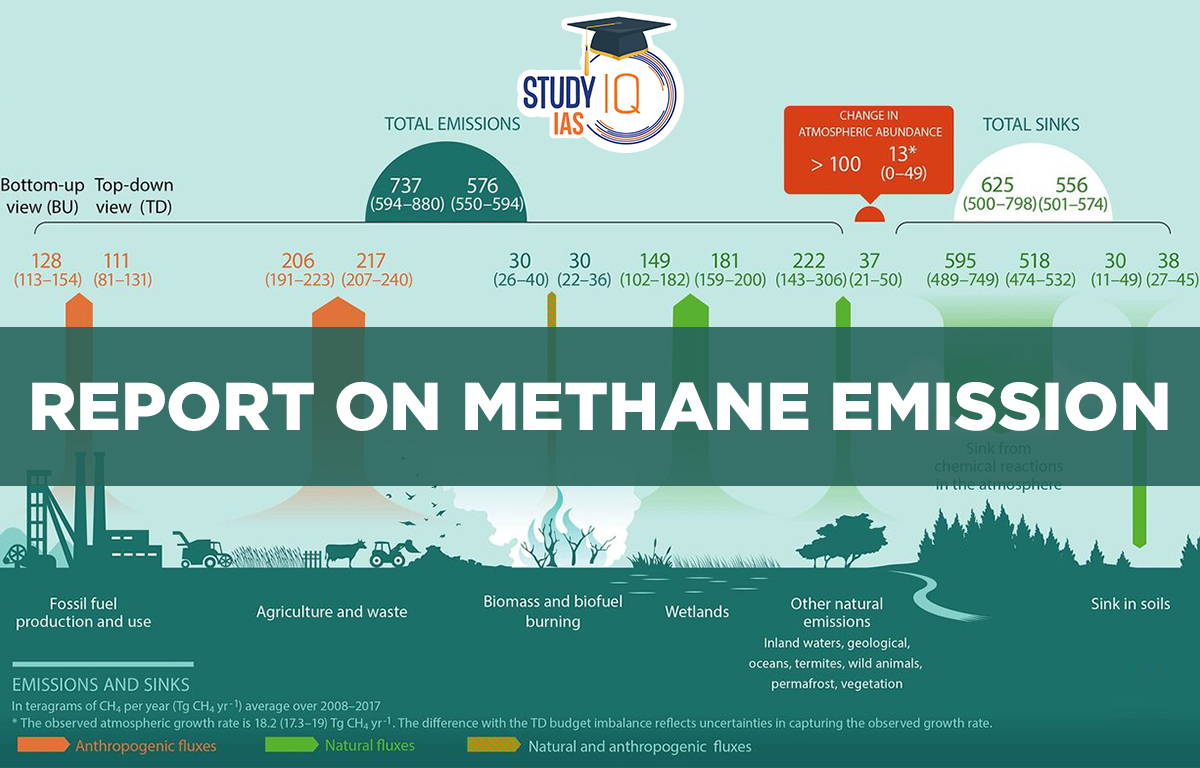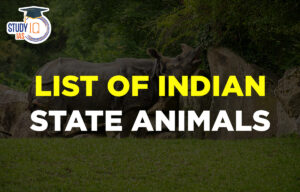Table of Contents
Context: According to a recent report, the fossil fuel firms have failed to curb methane emissions, despite their pledges to find and fix leaking infrastructure.
Global Methane Tracker 2023 Report
- This Report has been released by the International Energy Agency.
- The IEA produces and publishes country-level estimates for energy-related methane emissions and abatement options as part of our IEA Global Methane Tracker.
International Energy Agency(IEA)
- The IEA was established in 1974, in the wake of the 1973-1974 oil crisis, to help its members respond to major oil supply disruptions.
- Its functions include tracking and analyzing global key energy trends, promoting sound energy policy, and fostering multinational energy technology cooperation.
- The IEA is made up of 31 member countries.
- India became an Associate member of IEA in March 2017.
Methane Emissions
- Impact: Methane is the primary contributor to the formation of ground-level ozone, a hazardous air pollutant and greenhouse gas, exposure to which causes 1 million premature deaths every year.
- Methane is responsible for around 30% of the rise in global temperatures since the Industrial Revolution.
- A report by the UNEP observed that over a 20-year period, methane is 80 times more potent at warming than carbon dioxide.
- Source: Global Methane Budget suggests that annual global methane emissions are around 580 Mt.
- This includes emissions from natural sources (around 40% of the total) and from human activity (around 60% of the total), also known as anthropogenic emissions.
- The largest anthropogenic source is agriculture, closely followed by the energy sector, which includes emissions from coal, oil, natural gas and biofuels.
Key Highlights of the Report
- Energy Sector: The energy sector is responsible for nearly 40% of total methane emissions attributable to human activity, second only to agriculture.
- Coal, oil and natural gas operations, leaks from end use equipment, incomplete combustion of bio-energy majorly contributed to the emissions.
- In the oil and gas sector, emissions can be reduced by over 75% by implementing leak detection measures and upgrading leaky equipment.
- Achieving universal access to clean cooking and modern heating would cut emissions.
- Fossil Fuels: Methane emissions from fossil fuel operations rose to more than 120 Mt in 2022, slightly below the record level seen in 2019.
- 70% of methane emissions from fossil fuel operations could be reduced with existing technology.
- Methane Abatement: Methane abatement is very cost-effective in the oil and gas sector.
- Around USD 100 billion in investment is required to 2030 to deploy all methane abatement measures in the oil and gas sector.
- Natural Gas: More than 260 billion cubic metres (bcm) of natural gas is wasted through flaring and methane leaks globally today.
- Stopping this waste of natural gas would also reduce global temperature rise by nearly 0.1 °C by mid-century.
- Satellite Monitoring: Current satellites and data processing techniques can be used to detect and quantify total emissions from major leaks over a large area.
- New satellites are being developed that will provide higher resolution, greater coverage, and have more sensitive detection thresholds.
- Coal Operations: Coal operations released just over 40 Mt of methane emissions in 2022, around half of which came from China, the world’s largest coal producer.
- Nearly 55% of methane emissions from coal mines globally could be avoided with existing technologies.
- LNG: Methane leaks can occur along the liquefied natural gas (LNG) pipeline.
- Leaks can occur at gas service valves, reciprocating compressors, pump seals or metering equipment as well as during the transfer of LNG from the facility to the ship.
- India’s Share: India’s share in global emissions stands at 8.3%.
- Agriculture is the largest emissions source and India’s share of emissions from the energy sector is 17%.
Global Initiatives Mentioned in the Report
- Regulatory Roadmap and Toolkit: The IEA has developed a Regulatory Roadmap and Toolkit for coal mine methane.
- It is a step-by-step guide for countries seeking to drive down these methane emissions.
- Clean Development Mechanism: Under this, emission-reduction projects in developing countries can earn certified emission reduction credits.
- These saleable credits can be used by industrialized countries to meet a part of their emission reduction targets under the Kyoto Protocol.
- Global Methane Pledge (GMP): Led by the United States and the European Union, the Pledge now has 150 country participants who together are responsible for more than half of global methane emissions from human activity.
- By joining the Pledge, countries commit to work together to collectively reduce methane emissions by at least 30% below 2020 levels by 2030.
- Methane Roadmap Action Programme: The Climate and Clean Air Coalition has launched this programme to support development and implementation of transparent and consistent national methane roadmaps.
- Global Gas Flaring Reduction Partnership (GGFR): This is a multi-donor trust fund composed of governments, oil companies, and multilateral organizations.
- It is committed to ending routine gas flaring at oil production sites across the world.
- Global Methane Hub: It was established to channel funding to projects that can reduce methane emissions across all sectors.
- Methane Alert and Response System: The UNEP recently launched the Methane Alert and Response System, which uses satellites to detect very large leaks and provide timely alerts to operators and regulators.
- U.S.-China Joint Glasgow Declaration: At COP26, the US and China issued a joint declaration, aiming to cooperate on developing regulatory frameworks and environmental standards to reduce greenhouse gases emissions.
- Zero Routine Flaring (ZRF) by 2030: Launched in 2015, the ZRF Initiative by World Bank commits governments and oil companies, to end routine flaring no later than 2030.
- Aiming for Zero initiative: In 2022, the Oil and Gas Climate Initiative launched the initiative for the industry to treat methane emissions as seriously as it treats safety.
- Just Energy Transition Partnership: It is international initiative launched by Indonesia and a group of leading economies to reduce coal emissions.
- Oil & Gas Methane Partnership 2.0: The Oil & Gas Methane Partnership 2.0 (OGMP 2.0) is a multi-stakeholder initiative launched by UNEP and the Climate and Clean Air Coalition.


 Daily Quiz 17 April 2025
Daily Quiz 17 April 2025
 Nilgiri Biosphere Reserve, Map, Climate,...
Nilgiri Biosphere Reserve, Map, Climate,...
 Complete List of Indian State Animals
Complete List of Indian State Animals





















